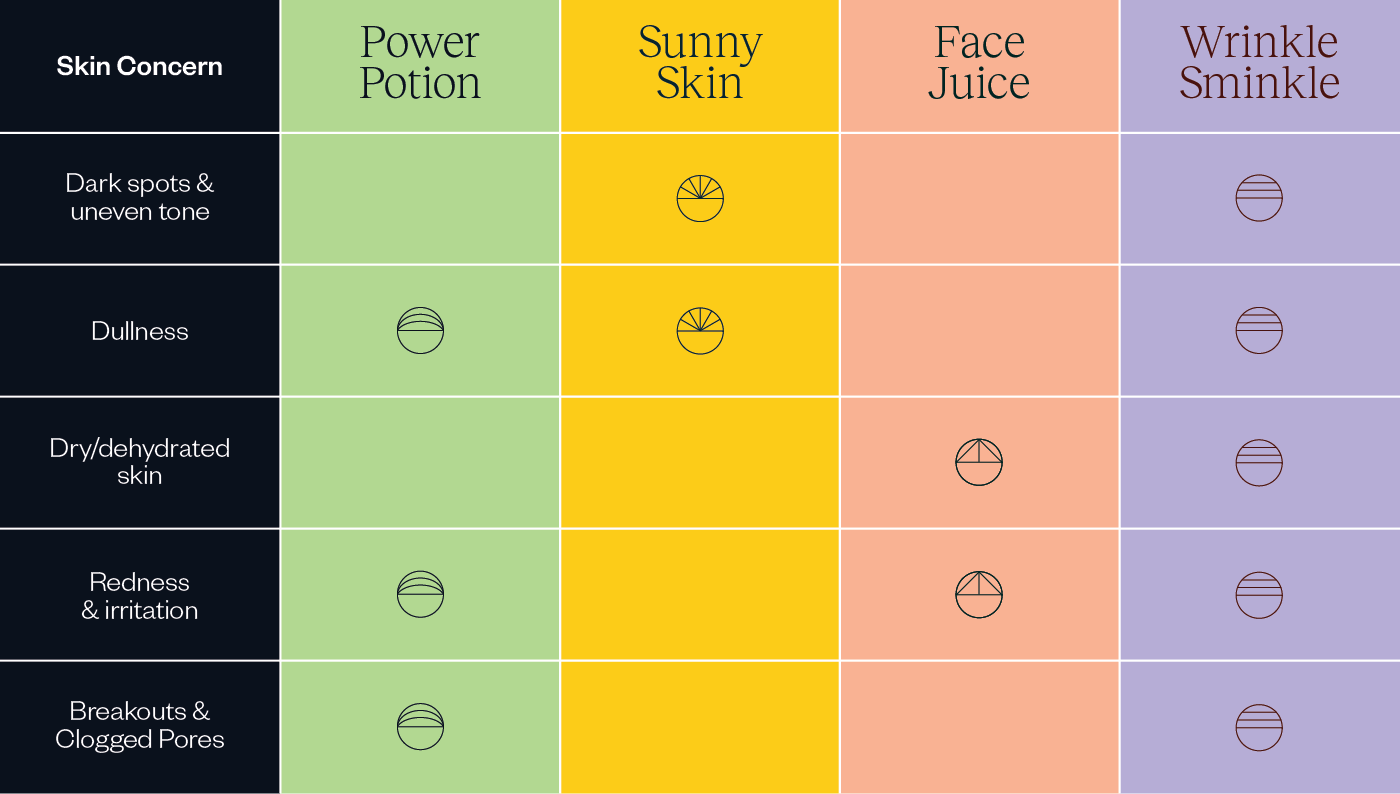When it comes to taking care of our skin, we are always on the lookout for effective methods and products. And one skincare trend that’s been gaining popularity is layering serums on the face. But how exactly do we do it? Is there a specific order or technique? Let’s dive in and explore the art of layering serums for a radiant and healthy complexion.
Layering serums can be a game-changer in your skincare routine. The key is to understand the characteristics of each serum and choose the right combination for your specific needs. Start by cleansing your face and patting it dry. Then, begin with the thinnest serum, like a water-based one, and apply a few drops all over your face. Wait for it to absorb before moving on to the next serum. Laying this foundation allows each serum to penetrate the skin effectively, targeting different concerns such as hydration, brightening, or anti-aging. By layering serums strategically, you can create a customized skincare routine that addresses multiple aspects of your skin health.
When layering serums on your face, start with the thinnest consistency and work your way up to thicker formulas. After cleansing and toning, apply a serum with active ingredients like vitamin C or hyaluronic acid. Let it absorb for a minute or two, then apply the next serum. Repeat this process for each serum, allowing each layer to fully absorb before adding the next one. Finish with a moisturizer to seal in all the benefits. Remember to always patch test new products and be consistent with your routine for best results.

How to Layer Serums on Face
The layering of serums has become a popular skincare routine, especially for those who want to target specific skin concerns. But how exactly do you layer serums on your face? In this article, we will guide you through the steps of layering serums effectively and maximizing their benefits.
Step 1: Cleanse Your Face
Before you start layering serums, it’s important to cleanse your face thoroughly. Use a gentle cleanser suited for your skin type to remove any dirt, oil, or makeup residues. This will allow the serums to penetrate better into your skin and work more effectively.
Step 1.1: Choose the Right Cleanser
When selecting a cleanser, consider your skin type and any specific concerns you have. For dry or sensitive skin, opt for a mild, hydrating cleanser. If you have oily or acne-prone skin, choose a cleanser that is oil-free and formulated to control excess sebum.
Step 1.2: Double Cleansing
For those who wear heavy makeup or sunscreen, double cleansing can be beneficial. Double cleansing involves using an oil-based cleanser to remove makeup and then following up with a water-based cleanser to remove any remaining impurities. This extra step ensures that your face is well-prepared for the serum application.
Step 2: Apply Serums in Order
Once your face is cleansed, it’s time to layer the serums. The order of application is crucial to ensure maximum efficacy. Here’s a suggested order:
- Start with the thinnest consistency serum and apply it first.
- Follow with serums of increasing thickness or potency.
- Apply any spot treatments or targeted serums for specific concerns.
- Finish with a moisturizer to seal in the serums and provide hydration.
Step 2.1: Layering Order Example
Here is an example of a suggested layering order:
| Step | Product |
| 1 | Hydrating Serum |
| 2 | Vitamin C Serum |
| 3 | Retinol Serum |
| 4 | Spot Treatment (e.g., Acne Treatment) |
| 5 | Moisturizer |
Step 3: Apply with Gentle Massage
When applying each serum, use gentle upward strokes or tapping motions to massage the product into your skin. This helps with better absorption and blood circulation. Avoid harsh rubbing or pulling on the skin, as this can cause irritation or damage.
Step 4: Follow with SPF
After applying your serums, it’s essential to protect your skin from sun damage. Finish your morning skincare routine with a broad-spectrum sunscreen with an SPF of 30 or higher. This step will shield your skin from harmful UV rays and prevent any potential damage.
Step 5: Consistency is Key
To reap the benefits of layered serums, consistency is key. It’s important to follow this routine regularly and give your skin time to adjust and show improvements. Results may vary depending on various factors such as skin type, specific concerns, and the quality of the serums used.
Step 6: Monitor and Adjust
Pay attention to how your skin responds to the layered serums. If you experience any irritation, redness, or discomfort, it may be a sign that you need to adjust the products or the order of application. Listen to your skin’s needs and make necessary changes to your routine.
Step 7: Seek Professional Advice
If you’re unsure about which serums to use or how to layer them effectively, it’s always a good idea to consult with a dermatologist or skincare professional. They can assess your skin condition, recommend suitable products, and provide personalized guidance based on your needs.
Conclusion
Layering serums on your face can be a game-changer for your skincare routine. By following the right order of application and using high-quality products, you can address multiple skin concerns effectively. Remember to cleanse your face, apply serums in the correct order, use gentle massage techniques, protect your skin with SPF, be consistent, and monitor your skin’s response. If you’re unsure, seek professional advice. Now you’re ready to unlock the full potential of serums and achieve healthier, glowing skin.
Key Takeaways – How to Layer Serums on Face
- Choose serums with complementary ingredients to address specific skincare concerns.
- Cleanse and tone your face before applying serums.
- Start with the thinnest consistency serum and gradually layer on thicker formulas.
- Allow each layer to fully absorb before applying the next one.
- Finish with a moisturizer to lock in all the serums and provide hydration.
Frequently Asked Questions
When it comes to layering serums on your face, there can be some confusion about the order and combination of products. To help clarify things, we’ve put together some common questions and answers about how to properly layer serums for optimal results.
1. How many serums should I use in my skincare routine?
It’s generally recommended to use no more than three serums in your skincare routine. Using too many can overwhelm your skin and decrease the effectiveness of the products. Choose serums that target specific concerns or address different areas of your skin and layer them accordingly.
Start with a lightweight serum and gradually add thicker or more potent serums. Allow each serum to fully absorb into the skin before applying the next one. This will prevent pilling or product build-up on the surface of your skin.
2. What is the correct order to layer serums on the face?
The general rule of thumb is to layer serums from thinnest to thickest consistency. This ensures that each serum is properly absorbed into the skin and allows the active ingredients to penetrate effectively. Here’s the typical order of layering:
1. Start with a cleansed and toned face.
2. Apply a lightweight serum with a high concentration of active ingredients, such as a vitamin C serum or hyaluronic acid serum.
3. Follow with serums that have a slightly thicker consistency, such as a retinol serum or antioxidant serum.
4. Finish with a moisturizing serum or oil to lock in moisture and provide hydration.
3. Can I mix different serums together before applying?
While it’s generally recommended to layer serums in the correct order, you can also mix certain serums together before applying if they are compatible. This can help streamline your skincare routine and save time. However, be cautious when combining serums, as some ingredients may not work well together and can cause irritation or ineffectiveness.
If you want to mix serums, it’s best to consult with a skincare professional or do thorough research on the compatibility of the specific products you intend to combine. Always perform a patch test before applying any new combination of serums to ensure your skin reacts well.
4. How long should I wait between applying each serum?
It’s important to give each serum enough time to absorb into the skin before applying the next one. A general guideline is to wait about 30 seconds to 1 minute between each serum application. This allows the active ingredients to penetrate and work their magic before the next layer is applied.
If you’re using a particularly thick or slow-absorbing serum, you may need to wait a bit longer before applying the next one. Pay attention to your skin and adjust the waiting time accordingly to ensure optimal absorption.
5. Should I apply serums to my neck and décolletage?
Yes, it’s beneficial to apply serums to your neck and décolletage as well. These areas are often exposed to the same environmental factors as your face and can show signs of aging or damage. Just like your face, cleanse and tone these areas before applying your serums.
Remember to use the same layering technique as you do for your face, starting with the thinnest consistency and working your way up to thicker serums. Extend the serums down your neck and onto your décolletage, and finish with a moisturizing serum or oil.

How to layer skin care products| Dr Dray
To layer serums on your face, begin by cleansing and toning your skin.
Next, apply your thinnest serum first, followed by thicker serums, and finish with a moisturizer.
Gently massage each serum into your skin using upward motions.
Remember to wait a few minutes between each serum application to allow proper absorption.
Follow this routine in the morning and evening for optimal results.
By layering your serums, you can target multiple skin concerns and enhance the effectiveness of your skincare routine.
Enjoy healthy, glowing skin!






Leave A Comment